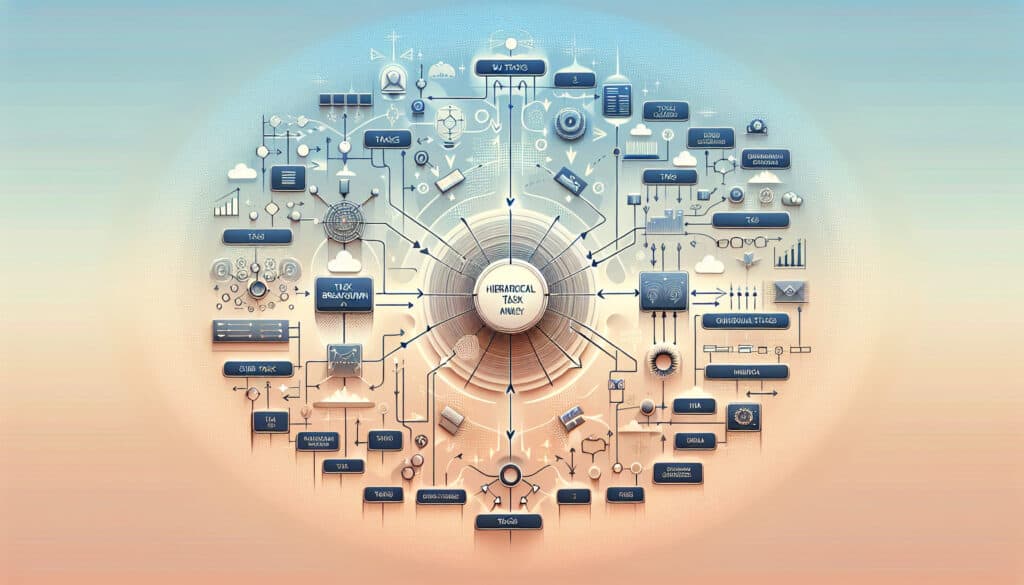To understand and describe how a task is performed.
- Methodologies: Ergonomics
Hierarchical Task Analysis (HTA)

Hierarchical Task Analysis (HTA)
- Continuous Improvement, Design Thinking, Human-Centered Design, Process Improvement, Training, Usability, Usability Testing, User experience (UX), User Interface (UI)
Objective:
How it’s used:
- A systematic method for breaking down a task into a hierarchy of goals, sub-goals, operations, and plans. It is used to understand the steps required to perform a task, identify potential problems, and design more efficient and user-friendly systems.
Pros
- Provides a detailed and structured understanding of a task; Helps to identify training needs and design better user interfaces.
Cons
- Can be time-consuming and complex to conduct; Requires a skilled analyst to perform correctly.
Categories:
- Ergonomics, Product Design
Best for:
- Analyzing complex tasks to improve user interface design and develop effective training materials.
Hierarchical Task Analysis is particularly effective in industries such as software development, healthcare, and manufacturing, where complex tasks are commonly addressed through systematic evaluation. In software development, it aids in decomposing user interactions, guiding the design of intuitive interfaces, thereby improving user experience. In healthcare, HTA can clarify procedures involved in patient care, ensuring that medical personnel follow protocols efficiently, which is crucial for safety and compliance. Manufacturing processes benefit from HTA by identifying steps in assembly lines, enhancing productivity, and reducing errors. This methodology is typically initiated by product designers, engineers, and usability experts during the early stages of product development or redesign phases, leading to better collaboration among interdisciplinary teams. Participants might include subject matter experts, end-users, and instructional designers, who can provide valuable input on task execution and user experiences. The findings from HTA can inform training material development, ensuring that training corresponds with the actual tasks users will perform, which increases retention and competence in task execution. Through its structured approach, HTA allows teams to pinpoint potential failures in task execution, resulting in the design of systems that are not only efficient but also prioritize user-centric elements.
Key steps of this methodology
- Define the main task that needs analysis.
- Break down the main task into sub-goals.
- Identify operations required to achieve each sub-goal.
- Develop plans detailing the execution of each operation.
- Create a visual representation of the hierarchy.
- Review and refine the hierarchy for clarity and completeness.
- Identify potential issues or inefficiencies within the hierarchy.
Pro Tips
- Incorporate user feedback early in the HTA process to refine goals and sub-goals, ensuring that the analysis reflects actual user behaviors and needs.
- Utilize task decomposition techniques like cognitive task analysis to explore user cognition and decision-making processes at each hierarchical level.
- Implement iterative testing of designs based on HTA findings to continuously improve usability and identify unforeseen challenges in real-world applications.
To read and compare several methodologies, we recommend the
> Extensive Methodologies Repository <
together with the 400+ other methodologies.
Your comments on this methodology or additional info are welcome on the comment section below ↓ , so as any engineering-related ideas or links.
Historical Context
1986
(if date is unknown or not relevant, e.g. "fluid mechanics", a rounded estimation of its notable emergence is provided)

Related Posts
Musculoskeletal Discomfort Questionnaires
Multivariate Testing (MVT)
Multiple Regression Analysis
Motion Capture Systems
MoSCoW Method
Mood’s Median Test